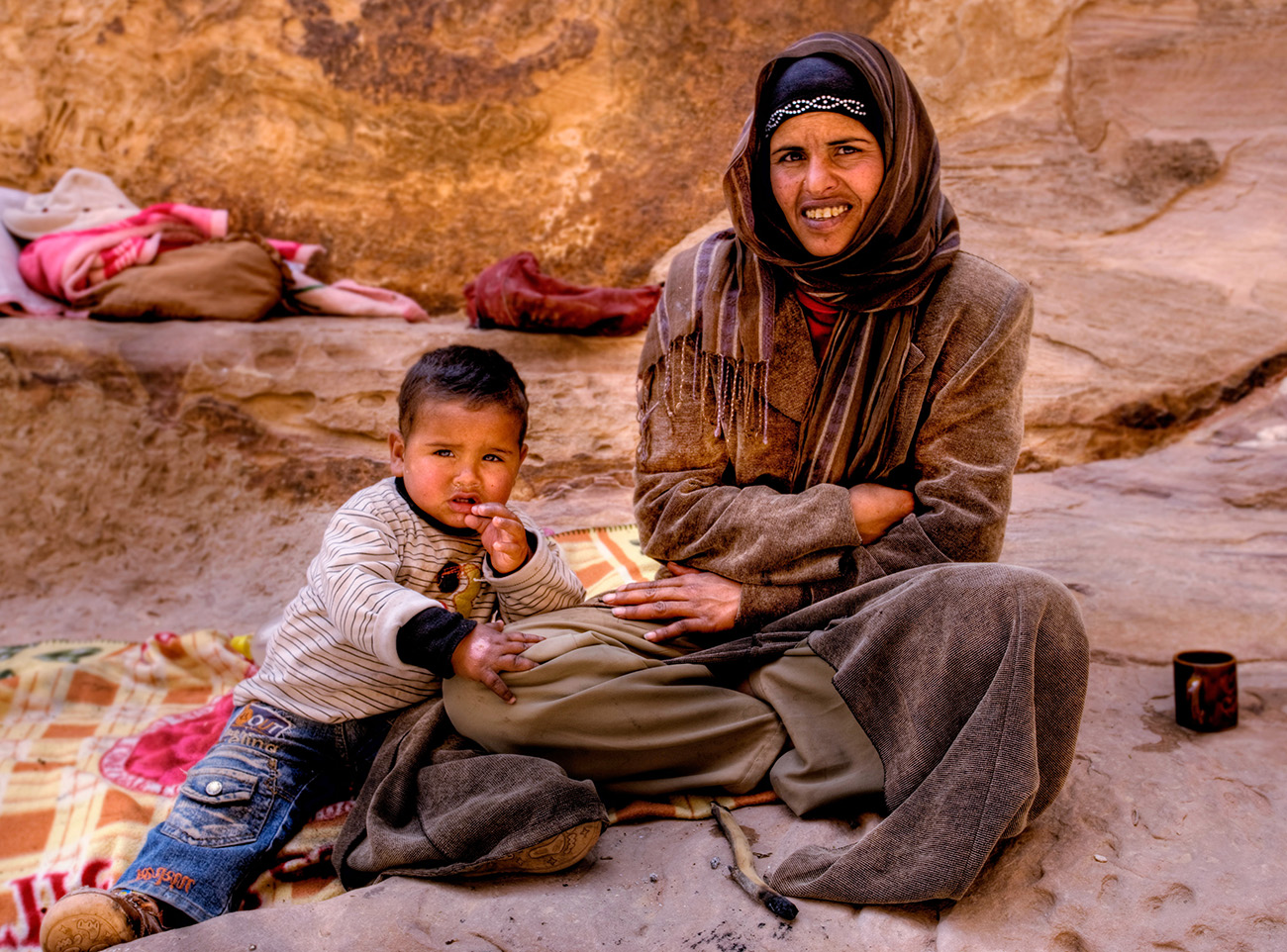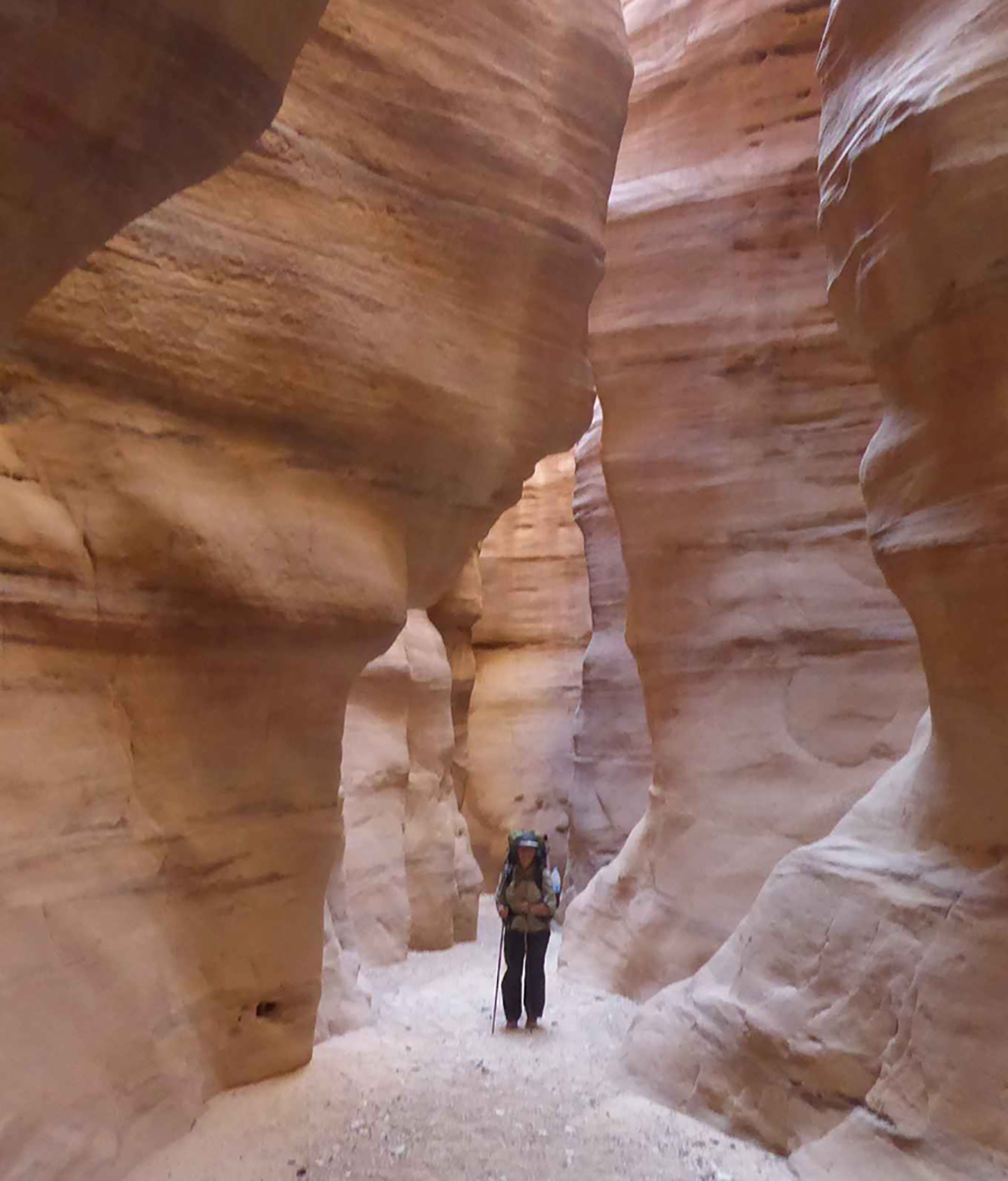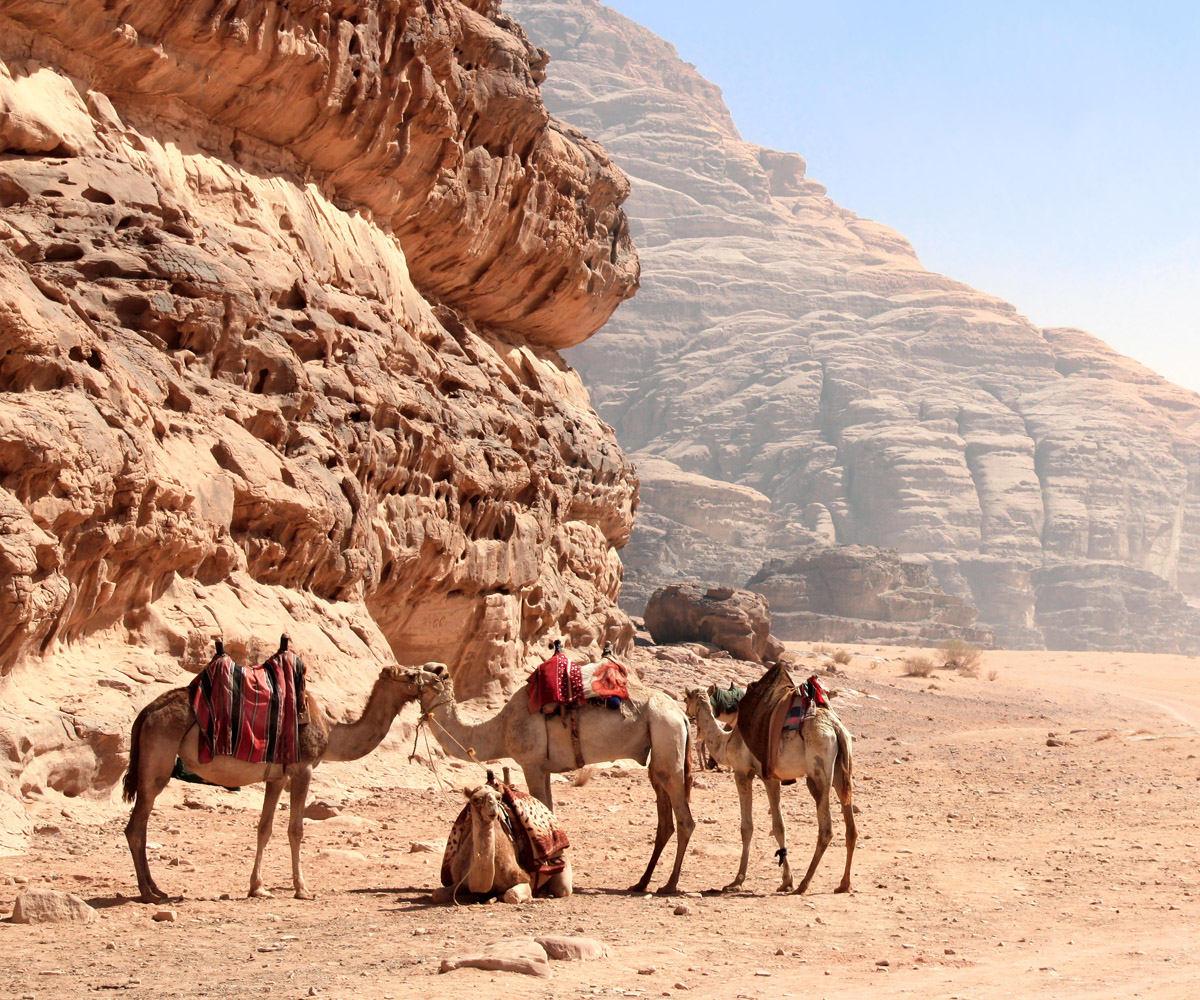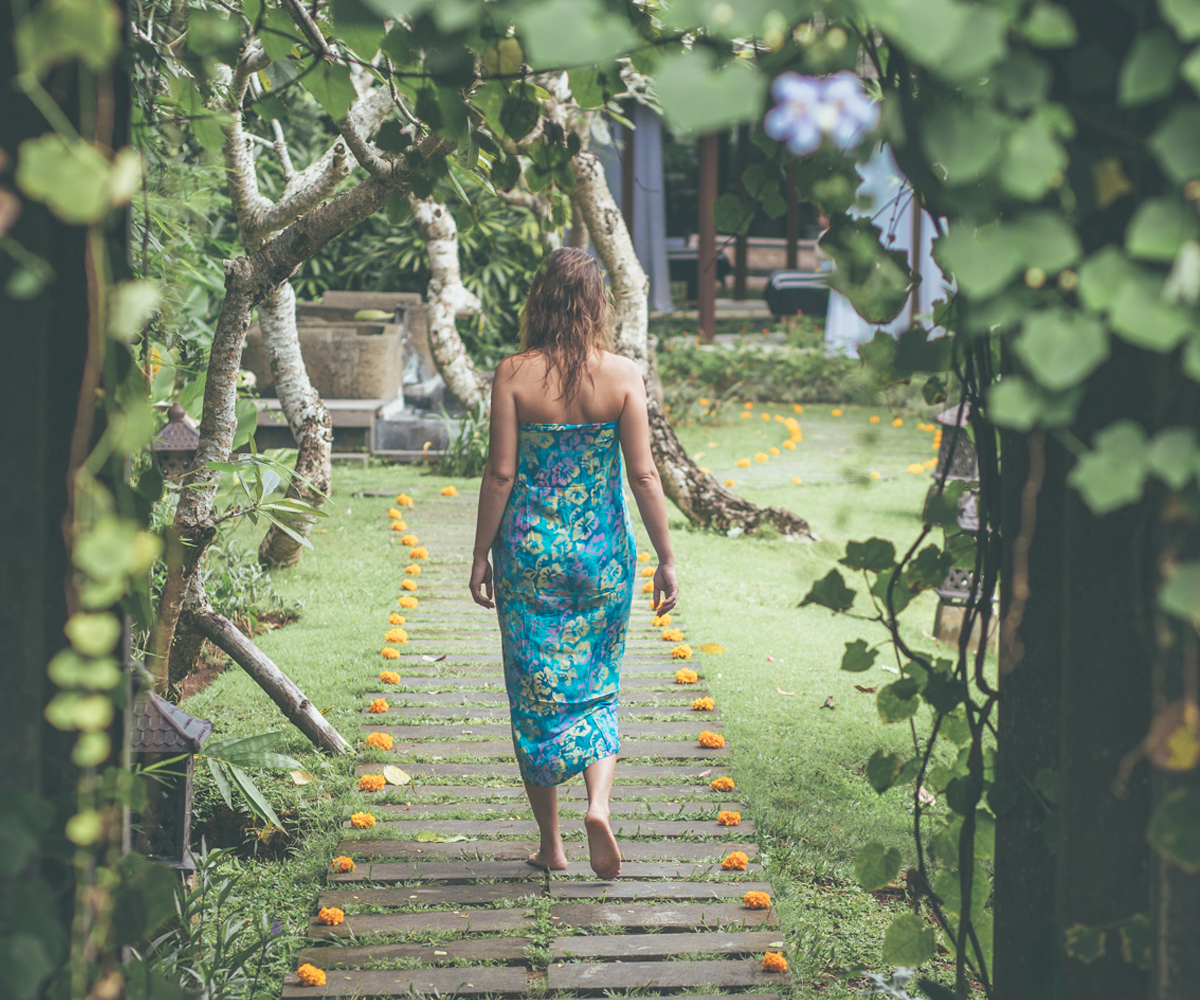For Kiwi couple Wendy and Ian Telford, going on holiday doesn’t mean booking a luxury resort. It means packing a tiny tent and walking shoes to tackle some of the world’s most challenging terrains – on foot. Wendy takes us on their 700km journey across the arid, rugged, ancient landscape of Jordan.
“How about a nice long walk?” my husband Ian asked, closing down the computer. “Seven hundred kilometres. In Jordan.”
I dropped my walking shoes back by the door. Not today then…
The Kingdom of Jordan has been described as an oasis of stability in a turbulent region. Its neighbours, Syria, Palestine, Israel, Iraq and Saudi Arabia, are often in our news headlines, but Jordan remains a peaceful and safe travel destination.
The Jordan Trail is in its third year.
A mixture of ancient pathways, Roman roads, goat and donkey trails, with rocky or sandy terrain, it starts in the north by the Syrian border in Um Qais, and heads south to the Gulf of Aqaba in the Red Sea.
Most of it is unmarked, so a GPS is essential, as are strong trail shoes, a not-too-heavy pack, a tent, and a good measure of determination.

Wendy and Ian walked 700km journey across Jordan to reach the Red Sea.
(Credit: Ian and Wendy Telford)After a few days in Jordan’s capital, Amman, provisioning and adjusting to jet lag and heat, we caught a series of mini buses north to Um Qais.
That afternoon we managed only 7km before exhaustion stopped us. We had hiked from an elevation of 400m above sea level to 160m below and hadn’t anticipated doing so in 40°C heat.
At the end of 20km on day two, we staggered into a “campground”, the only one we ever found. We noted the doubting tone in the warden’s question: “Do you think you will be able to finish the trail?” We both honestly replied, “We have no idea!”
The prospect of feeling so exhausted at the end of each day had us questioning our ability, our resolve, even our sanity! But over the following few days we realised that if we could survive the first week, we might manage to complete the whole trail.
Accommodation in Jordan ranges from luxury, such as that found at Dead Sea Resorts, to very basic, one-star hotels. On the trail, the only choice is your tent.
There are occasional recommendations for “wild camping” spots and while we always found an area to pitch our tent, the steep, rocky, mountainous terrain often made this challenging – some stages of the trail involved climbing over 1000m in the course of a day. But during the next six weeks we experienced a Jordan few visitors get a chance to see.
When you walk a long trail, the focus of every day becomes simple – just keep walking, one foot after the other… Routines become second nature and the unexpected, normal. Each day is a different adventure in unique situations.
The Jordan Trail crosses amazing and challenging areas. The ancient history of this country is always evident as you find you are walking on the remains of a Roman road, or through ruins from the time of Alexander the Great, or near the spring named for Moses when he was there.
In Fuhais, a rare Christian town in this Muslim country, we saw traditional hammam (bath houses) from Ottoman times. In Wadi Rum we were in awe of the desert and found details of more recent history. It was here that T. E. Lawrence (Lawrence of Arabia) spent much of his time. We later took a day trip to the Dead Sea, which weeks before, we had seen in the far distance, 1500m below us.
We experienced that famous “weightless” swim, which is unlike anything else! A trip to Jordan, even without the long walk experience, is amazing.
The Jordan Trail Association, established to promote the trail and provide information for hikers, had mentioned the presence of scorpions and snakes as possible hazards, but Ian had purposefully not mentioned their warnings about hyenas and wolves. Luckily in the entire 700km, we encountered only one small snake.
The dogs were another matter…

Wendy walks along a rare defined path.
We learnt how to discourage the packs of fierce dogs that suddenly ran at us. They were doing their jobs, guarding isolated homesteads, Bedouin settlements or the many herds of sheep and goats.
By bending down and picking up a rock, we could stop them in their tracks, although the threatening barking and snarling continued – they just kept a little further away. Only once did we actually have to hurl a rock.
If you are a tea drinker, Jordan is heaven. Traditional Bedouin hospitality and concern for strangers is still strong, at times even overwhelming. We would never have finished the trail had we accepted all the offers of tea from complete strangers.
From Bedouin tents, isolated dwellings, tiny shops and even solitary goat herders, we would always hear the cry, “Where are you from? Welcome to Jordan! Tea?” We grew accustomed to the black teapot, heated over a small open fire, filled with a very sweet, strong brew.
On one very windy night a Bedouin offered us an unused tent, not far from his own. We were delighted to pitch our tent in the shelter of the large three-sided structure, as all Bedouin tents are securely anchored by thick ropes to heavy, metal pegs hammered deep in the ground. They need to be.
About an hour after dark we were thinking how fortunate we were to have shelter on such a ferocious night, when there was a huge crash and one of the tree-trunk supports of the Bedouin shelter dropped to the ground. The cover and ground supports were still intact, but our shelter now resembled a wildly flapping monster. We prudently moved our tent further out, away from the worst of the movement.
Back to “bed” and another support hurtled down. In the midst of what was now a full-blown sandstorm, we searched for somewhere, anywhere, we could move our tent to, to ensure it was not shredded. By this time we could not even see the Bedouin’s own tent.
A skeletal bush was the best we could find, so we pitched our tent in a slight hollow behind it. The rest of the night was spent in a partly collapsed tent, converted to have as little windage as possible. Even so, sand constantly blew in one side and out the other.

A Bedouin mother and son – the locals always had a warm greeting and the offer of tea.
We had brought a few freeze-dried meals from New Zealand, but for most of the trail our only available food was two-minute noodles and tuna, which became our staples – light, easy to prepare and providing much needed salts and oils.
We found it difficult to sustain our calorie intake, as everything had to be carried and when it came to cooking, we could only boil water. Whenever we had “rest days” (about every six days) we rejoiced that Jordan has some of the tastiest food in the Middle East.
The usual favourites of hummus, falafel, kofta and salads were there, but we also enjoyed other local dishes.
There was the wonderful mansaf, the national dish of lamb, gently cooked in fermented yoghurt, served with rice and flatbread.
We were treated several times to maklouba (“upside down dish”), consisting of rice, chicken, aubergine and cauliflower, all served together after being cooked in spices and ceremonially upended from a huge pot onto a large communal plate – delicious!

Mansaf is a Jordanian dish of lamb cooked in fermented yoghurt and served with rice and flatbread.
As we progressed south, both the weather and the terrain changed. It became cooler, especially at night – winter was approaching and thunderstorms began to feature in weather forecasts. The rugged, rocky ground became desert sands, making each step more difficult.
The trail began to swing west, into the Jordan Valley, which runs the length of the country. Instead of climbing into and then struggling up out of the steep wadis (gorges), which drain into the huge valley, we walked their length.
Water, always a concern in this very arid country, became our major preoccupation. Throughout the trail we carried extra water, often adding several kilos to our load. Only twice did river valleys we crossed contain water. Ancient springs are often dry and locals reported a huge shortage of reliable water, especially in the past few years.
We had to organise water and food caches in the last two weeks of the trek. From Petra we spent a day travelling by 4WD, depositing four sacks of water bottles and food at strategic points, for use over the next five days. The bags had to be buried to prevent discovery by wildlife and we had to accurately record their GPS co-ordinates, so we could retrieve them.
It was a great relief when we later found them all intact.

The Treasury, Petra.
After four weeks of not meeting any other trekkers, we started to see other walkers further south on the trail, usually doing particular sections. While the trail as a whole is demanding, individual stages vary in difficulty.
The four-day walk from Dana to Petra is recognised by National Geographic as one of the world’s top 10 walks. These sections can be done in a supported group. Everything is done for you, except of course the walking. Some days I wondered if that might not have been a better option!
The trail runs through Petra and Wadi Rum, two of the must-see sights of a visit to Jordan. We entered Petra through the “back door”, walking in the opposite direction to most visitors. Our trail entered near the superb monastery, which most people reach after climbing 700 or so steep steps. We understood why many tourists opt for the donkey rides to the top.
Petra is often called the Rose City for the pink sandstone of the beautiful structures. It was built by the Nabateans, who ruled the area from around 400BC to 100AD. We were amazed at the extent of the city and the Nabatean accomplishments, especially in irrigation and transport.
Petra’s most famous sight is the Treasury. This ancient monument, carved out of the rock, is usually glimpsed as you exit the siq (high-walled, narrow wadi) and enter the city.

Ian in the siq of Wadi Aheimar.
(Credit: Ian and Wendy Telford)One week after our visit, flash floods roared through the siq, as rain that had fallen elsewhere hurtled down nearby Wadi Musa and funnelled through the narrow gap.
Therein lay our biggest concern and thus our keen weather monitoring in the south. With many siqs to walk through – the longest being 21km Wadi Aheimar – we didn’t dawdle.
During the last days of our journey, we still had not met anyone else doing the complete trail. But on our final night we shared a campsite with three other Kiwis – one of the women had done the whole trail, her mother and friend joining her from Dana.
They had arranged support for their final three nights and had requested a huge goat mansaf for their last trail meal. We were invited! So there we were, five tired but exhilarated Kiwis, on a very cold, starlit night, sharing a campfire and a delicious meal in the desert, in Jordan.
The next day, six-and-a-half weeks after beginning the trail, Ian and I completed the last hill climb, the last scree slope and the last long, downhill trek to make our way along the dusty road in Aqaba to the Red Sea – and a long, luxurious swim.
 Travel Jordan
Travel Jordan
.jpg)


